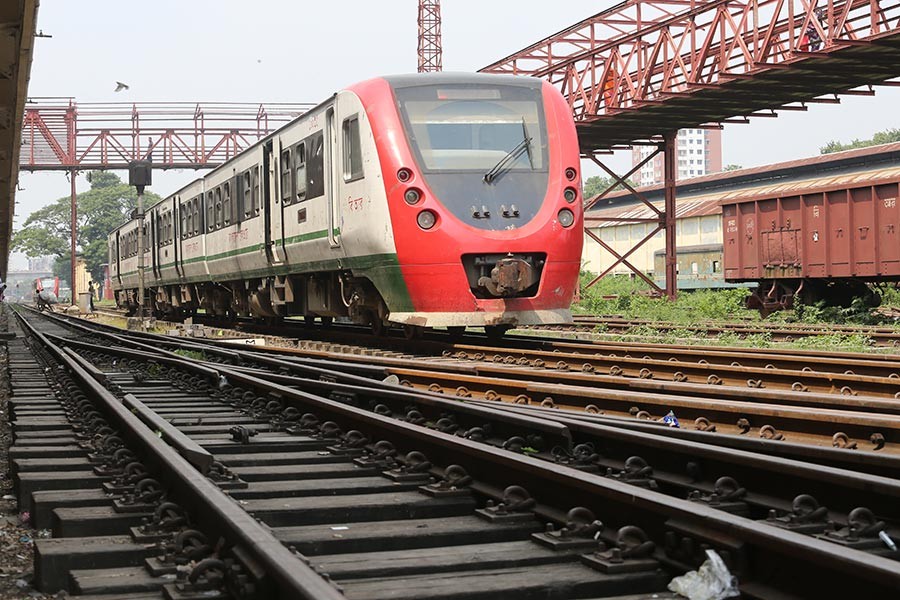The Planning Commission (PC) has approved a Bangladesh Railway (BR) proposal for studying the feasibility of introducing circular train service in Dhaka.
The BR is willing to introduce circular trains in the capital to help ease traffic congestion on the city roads.
Officials said the PC approved the study project last month more than one and a half years after submission of the project proposal.
The feasibility study on the 81.9-km circular railway network in both elevated and surface track would cost around Tk 297 million.
However, sources said getting approval for the project was delayed as the Dhaka Transport Coordination Authority (DTCA) and the BR were at odds over conducting the feasibility study.
The DTCA claims that the responsibility for conducting all feasibility studies concerning the STP-recommended transport options lies with it. But BR said it is the dedicated agency to conduct such survey. The PC's approval process was delayed because of the conflicting claims.
Officials said the BR after receiving the PC's nod will now give due importance to the project aiming to improve the city's traffic situation.
They said the study will find the best possible route covering areas by incorporating services with other mass transit systems including metro rails.
"There is no doubt that the city needs circular train services to facilitate cheap transports for commuters, but the same need to be synchronised with the metro rails and bus rapid transits," one of the officials said.
The BR has now rail track from Tongi to Narayanganj. It has planned to extend this rail route around the Dhaka city on circular base. The prefeasibility study proposed setting up the track from Kamalapur covering Purbachal Road, Terumukh, Abdullahpur, Dhour, Birulia, Gabtoli, Babubazar, Sadarghat, Fatulla, Chasara, Signboard and Demra.
According to the proposal, the circular train will facilitate passengers exit and entry of suburban people in Gazipur, Narayanganj, Keraniganj, Savar and Munshiganj.
The track has been proposed to be set up using mainly flood protection dam and eastern bypass for lessening the cost of land acquisition.


